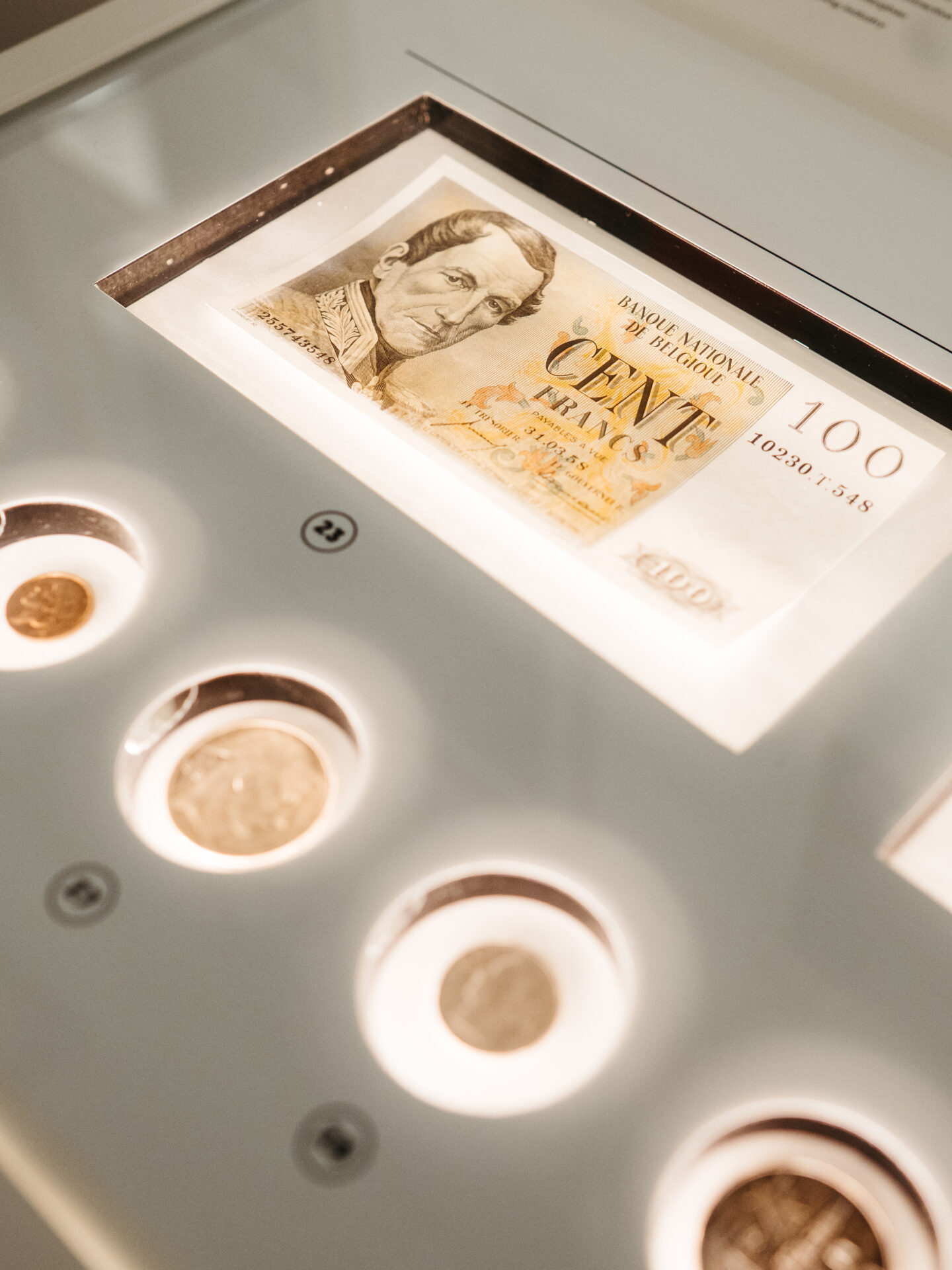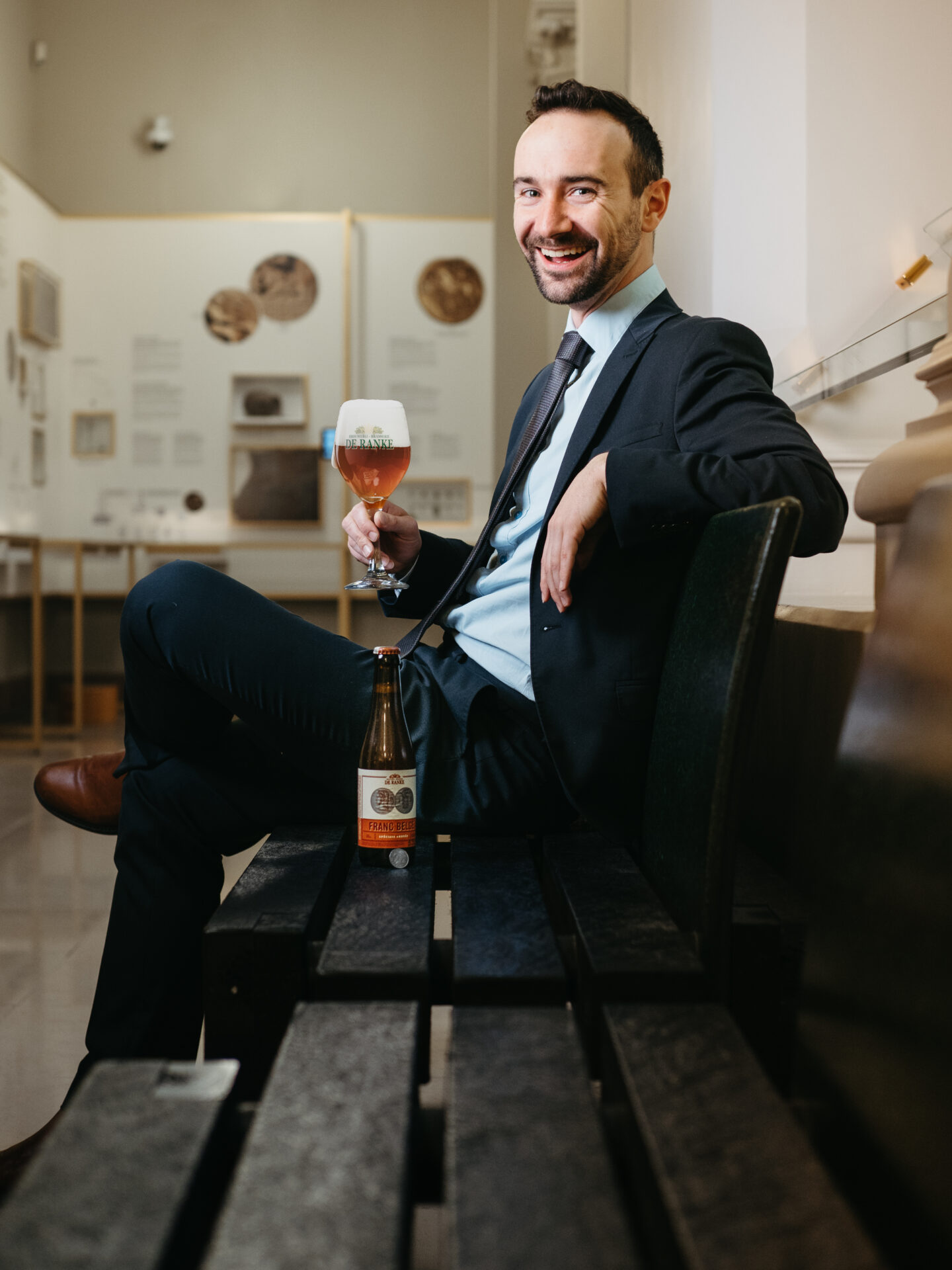Brasserie De Ranke represents the incongruous, knotted, and multifarious nature of Belgian identity.
It’s a Walloon brewery owned by Flemish brewers. Located in Dottignies, a village in the Hainaut province of Wallonia, its two co-owners, Nino Bacelle and Guido Devos, live in the Flemish towns of Wevelgem and Zwevegem, respectively. Workers at the brewery speak Flemish and French.
In 2018, in the face of polarising politics, Bacelle wanted to brew a new beer that could reignite a sense of unifying national pride. He wanted to name this new beer after a coin.
The Belgian one-franc coin – in circulation until 2002, when Bacelle was 30 years old – was first issued just after the Second World War to symbolise a prosperous recovery. “It’s just a feeling,” says Bacelle about using the one-franc coin on his new beer. “I wanted to express Belgian identity.”
Spéciale
Nino Bacelle had only one beer style in mind. Spéciale Belge was born from a competition in Liège in 1905. Belgian brewers were tasked with finding a beer that could compete with the growing volume of English ale and Bavarian lager imports. The winner of the competition was Belge du Faleau of Brasserie Binard de Châtelineau, an amber-coloured ale with a biscuity malt profile, strong bitterness, and subtle yeast character: the first Spéciale Belge.
By the 1970s, Spéciale Belge was ubiquitous. Bacelle recalls enjoying popular examples of the style such as Vieux Temps, Ginder Ale, Palm Spéciale, and De Koninck, all of which were malty, bitter, and hoppy. At that time, all were also produced by independent Belgian breweries. But everything changed in the late 1980s and early 1990s when family enterprises were bought by global conglomerates, and their recipes transformed. “Everybody was making it sweeter and less hoppy,” says Bacelle. “Everybody was changing the identity of this beer.”

De Ranke brewery
Today, Spéciale Belge is seen by many as outdated and boring. The beer style invented to celebrate Belgian identity seems to have become virtually irrelevant. “I was very well aware of the fact that it’s not a beer that is popular anymore,” Bacelle says. “But on the other hand, I don’t want to see it disappear completely. When we made it, we went back to its roots, making it bitter again.”
The version De Ranke created – named Franc Belge, after the Belgian franc coin – was bready and a little nutty, built on a grain base of Pilsner, Pale Ale, and Munich malts. Bacelle fermented his amber-coloured ale with a blend of two Belgian ale yeasts, one with a pleasant apricot and peach expression and the other with subtle notes of banana, clove, and pepper. Most importantly, Bacelle used large quantities of Fuggle and Hallertau whole-cone hops, equipping the beer with a firm bitterness and an earthy, floral, and lightly spicy character.
But there was one catch. Belgium banned the use of the image and name of a national coin without the say-so of the national authorities. The only way De Ranke could use the likeness of the coin was to be granted permission by a representative of the Crown: specifically, the Mint Master at Brussels’ Royal Mint of Belgium.
Without their consent, there would be no Franc Belge beer.
Mint Master
On November 16, 2018, in the offices of the Royal Mint of Belgium, Giovanni Van de Velde – assistant to the Belgian Mint Master Ingrid Van Herzele – opened Nino Bacelle’s email requesting the proposed label design featuring the Belgian one-franc coin.
“We have received your question,” he emailed back six days later. “Our legal department is currently looking into whether this can be allowed.” It was not unusual to receive requests for permission to refer to coins, but this was the first from a brewery.
When Van de Velde began examining De Ranke’s proposed label design, he saw that the graphic was of the Belgian one-franc first issued in 1950. That particular coin was the most minted in Belgium’s history: 1.6 billion were made between 1950 and 1988.

The inspiration behind the De Ranke's beer
The 1950 Belgian one-franc coin was part of a trio of post-war coins: the 50-franc coin featured the god Mercury to represent aspirational trade; the 50-cent coin featured a miner and lamp to represent the rebuilding of industry; and the one-franc coin on De Ranke’s label featured the head of Ceres, the goddess of grain crops, representing the hope of an agricultural revival. “They used those symbols for recovery, for the future, and for not looking back,” says Van de Velde.
Ceres’s head was a fitting symbol for a beer label. Van de Velde also noticed that the coin on the label featured both the words België and Belgique, inclusive of the French and Flemish-speaking communities living in the vicinity of the De Ranke brewery.
After checking the legal statutes, Van de Velde could find nothing to prohibit the use of the coin’s image and name on a beer label. “This one doesn’t seem to be a problem,” he emailed Nino Bacelle. “As a result, you can continue this wonderful initiative and launch it on the market. We are already looking forward to it.”
Circulation
On January 19, 2019, Brasserie De Ranke launched its new beer, Franc Belge. The launch event took place not at the brewery in Dottignies, but in the city that is most famous for Spéciale Belge today, Antwerp. The beer café chosen for the launch: Café Spéciale Belge.
“There’s always a risk that the beer doesn’t match with what you’d expect,” says Giovanni Van de Velde. “But I was quite happy when I tasted the beer. It was good.”
Around the same time that Franc Belge was released, the production facilities of the Royal Mint of Belgium closed. The decision was taken for economical reasons as Belgian coins are today made in the Royal Dutch Mint. It speaks to the ruthless pragmatism of Belgians, putting practicalities before national pride. “Why keep an organisation alive that is not completely efficient?” asks Van de Velde.

Giovanni Van de Velde with the Franc Belge beer
There is, however, still a Mint Master of the Royal Mint of Belgium. Following the retirement of Ingrid Van Herzele, Giovanni Van de Velde was appointed to the role on August 1, 2022.
As for the 1950 Belgian one-franc coin, it lost its value on January 1, 2002, when the Euro became Belgium’s official currency. But just like Spéciale Belge beers, ignored for so long, the coin lives on.
Today in Belgium, old, unexchanged 1950 Belgian franc coins are wedged behind sofa cushions, lying under park bushes and resting at the bottom of city fountains – 835 million of them. They are like the Belgian sense of identity: often hidden under the surface, but utterly distinct and stubbornly persistent.
This is an edited excerpt from the book Hidden Beers of Belgium, now available in all good bookshops and online retailers.

